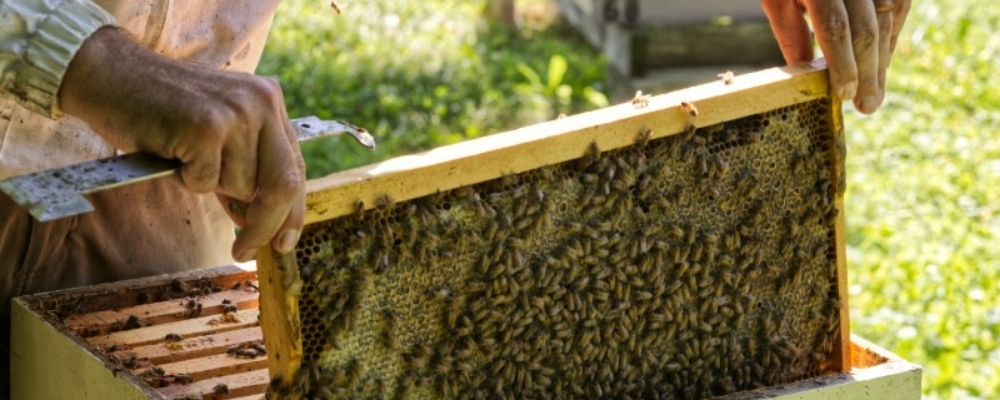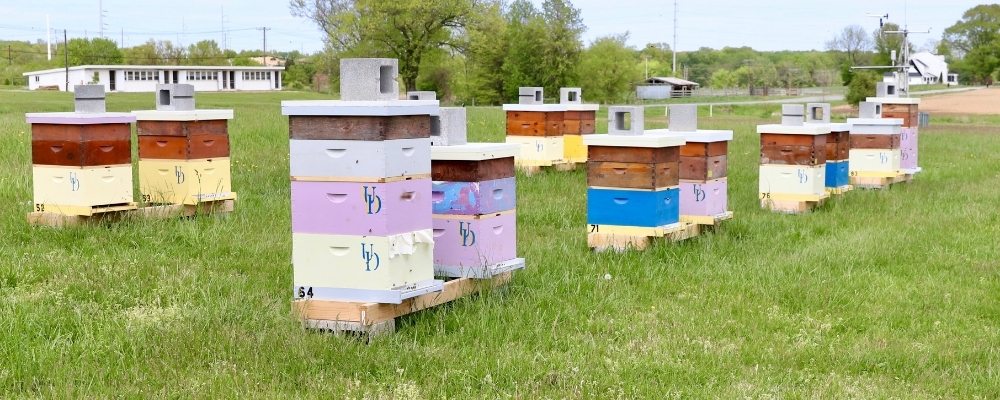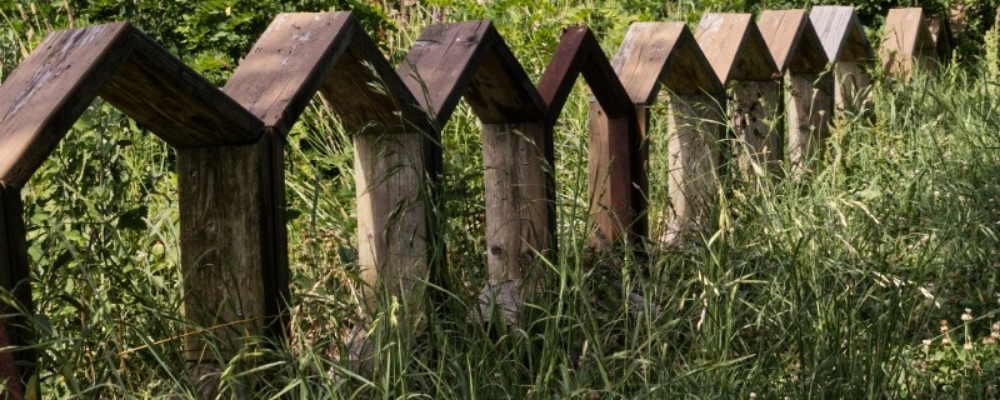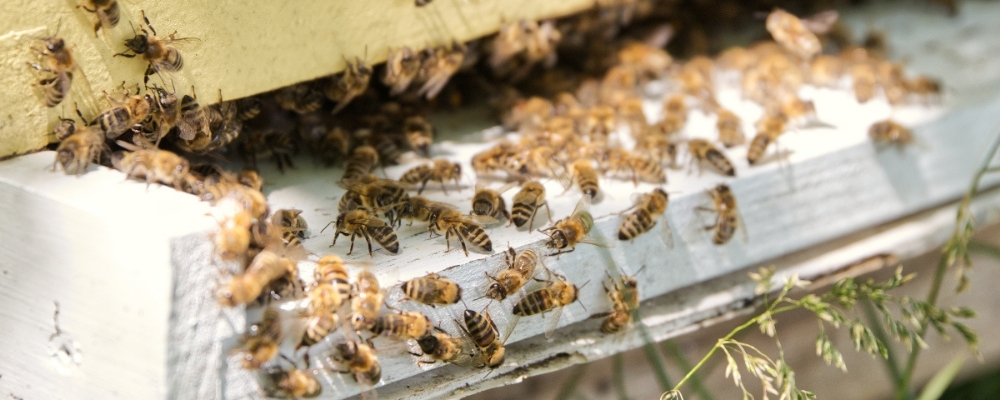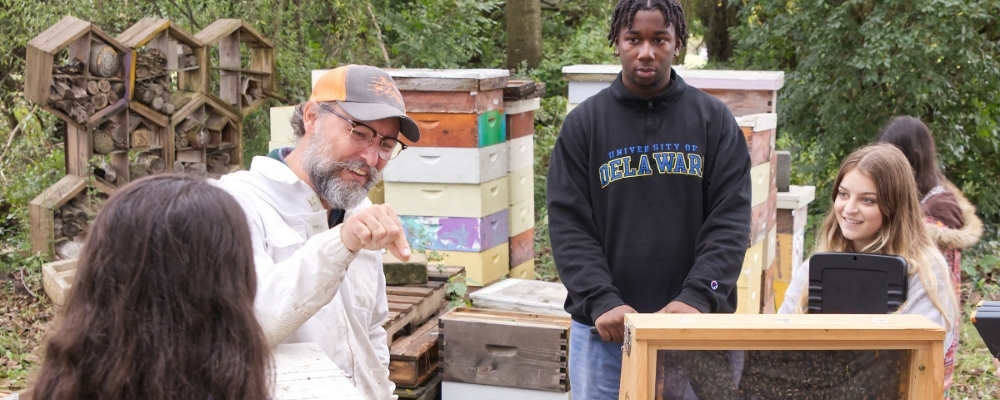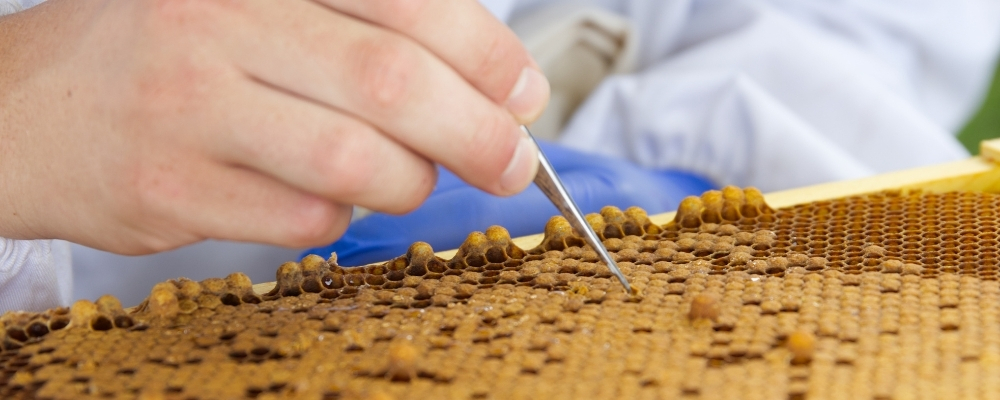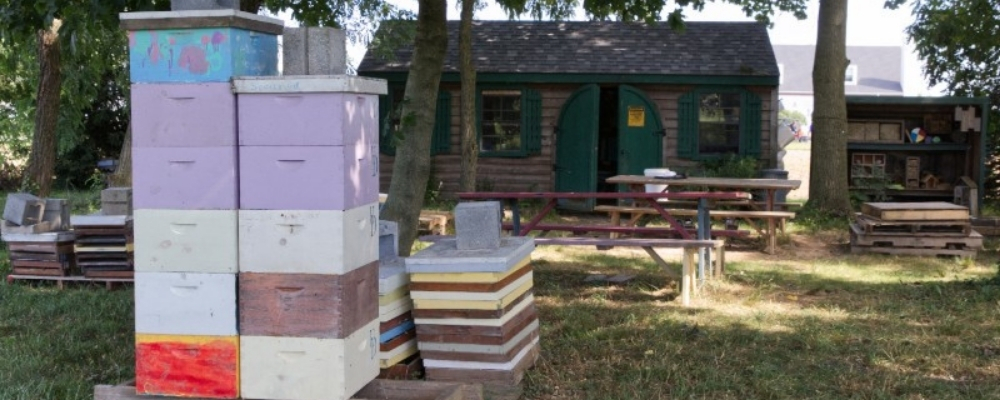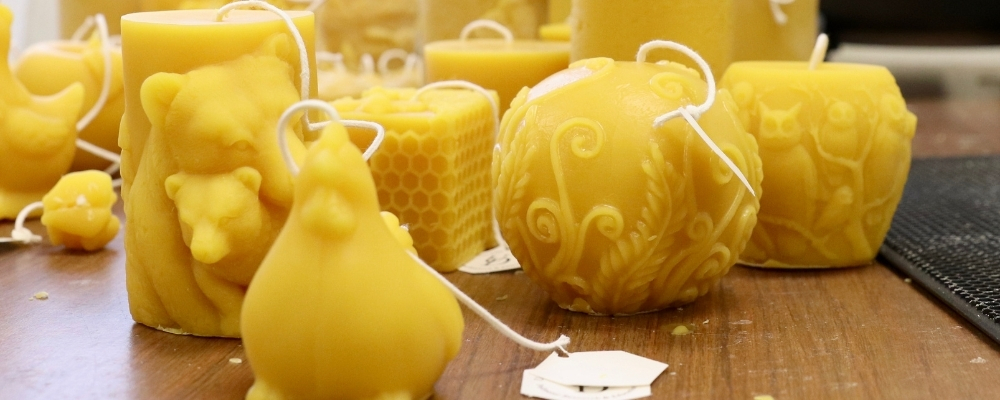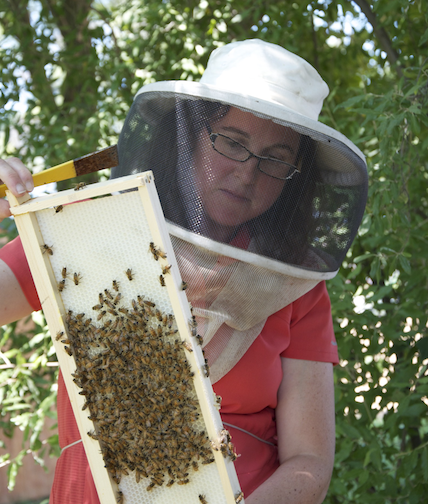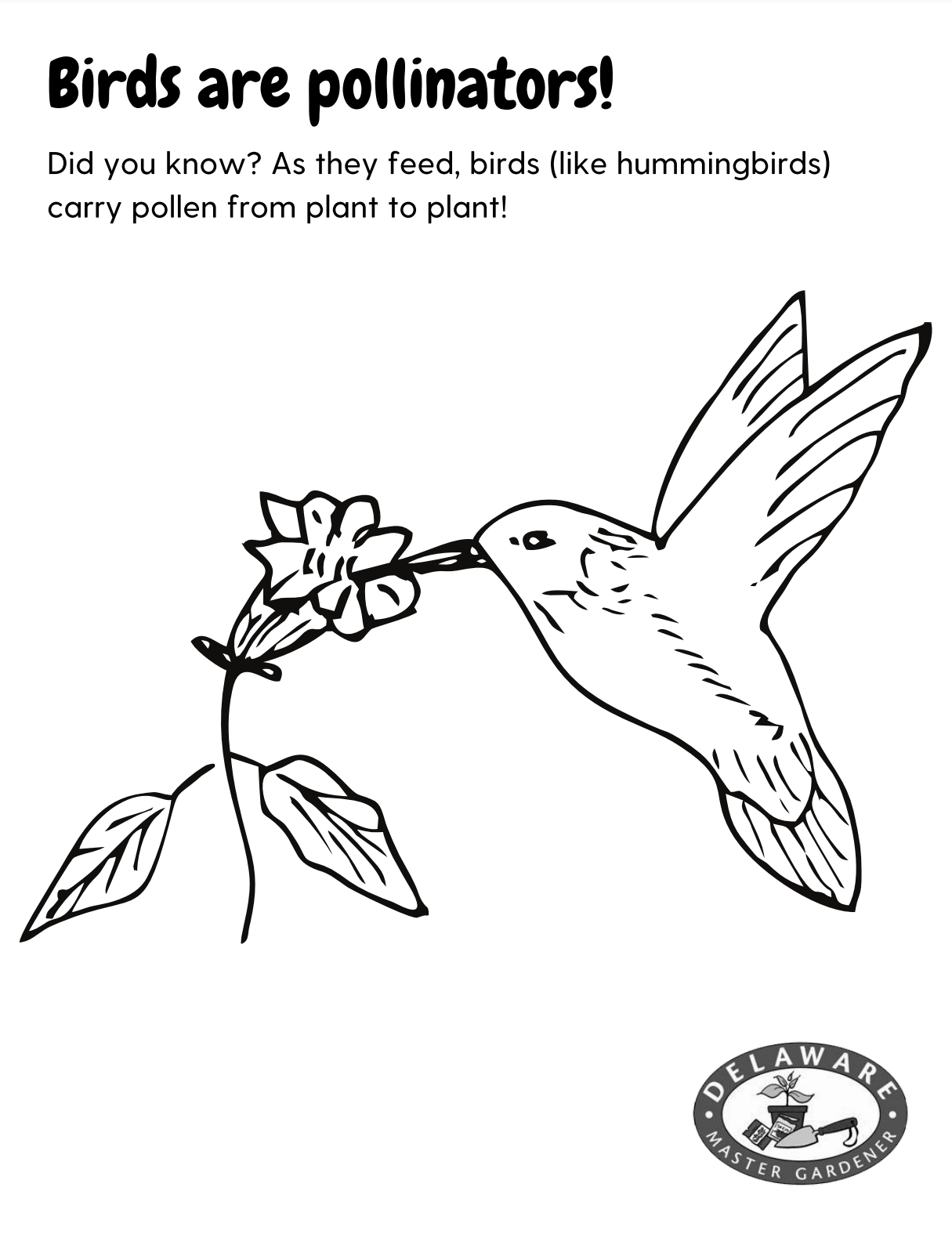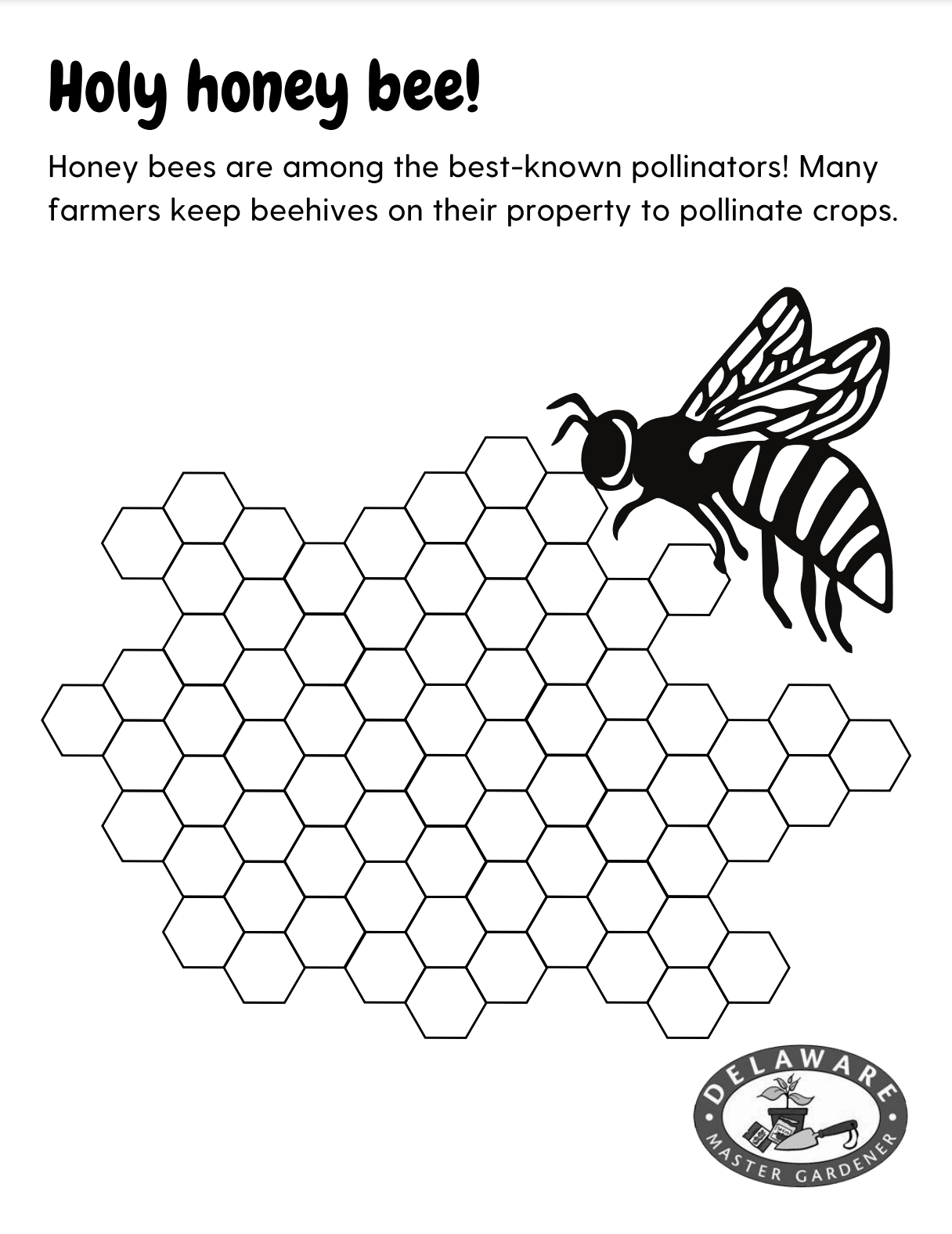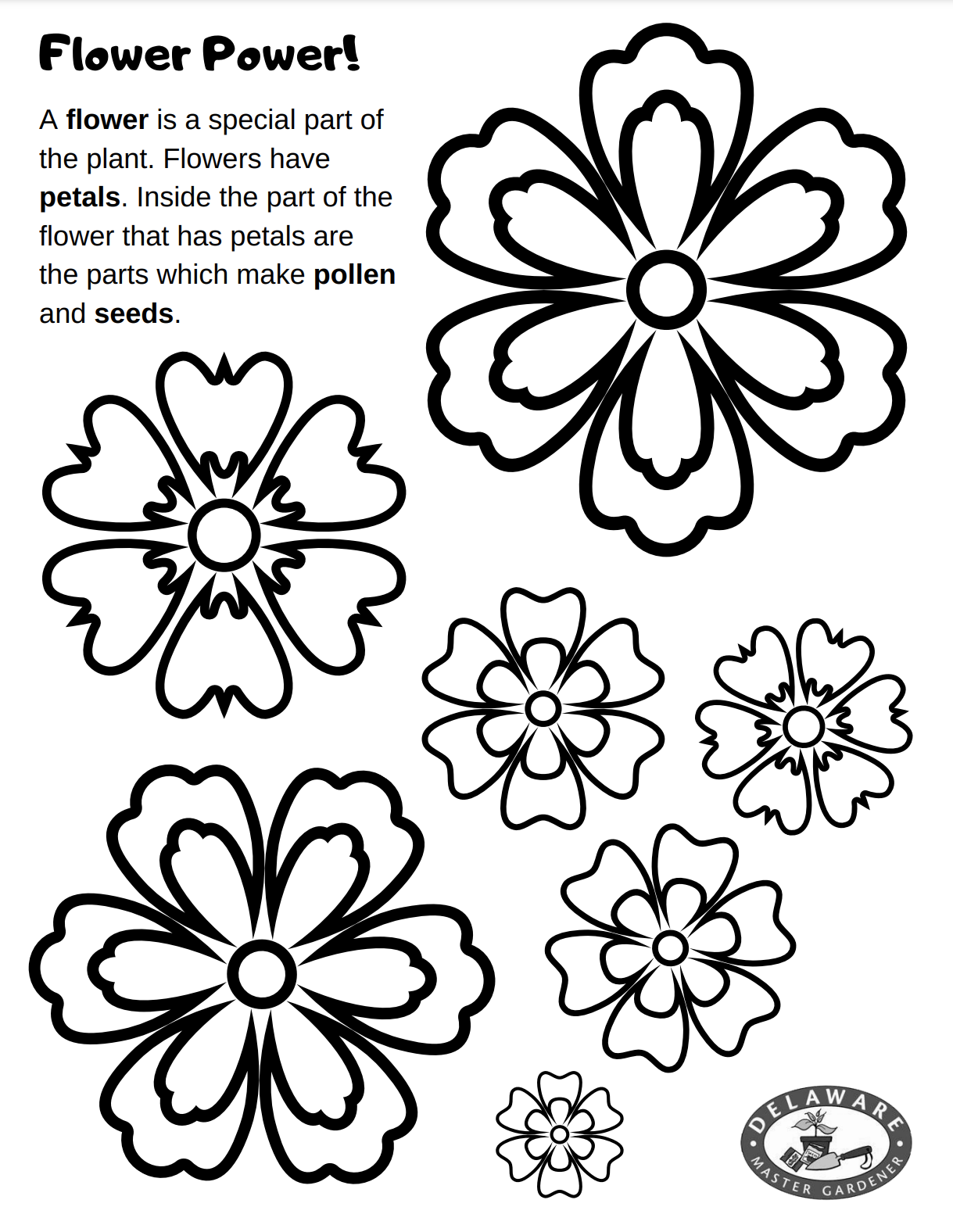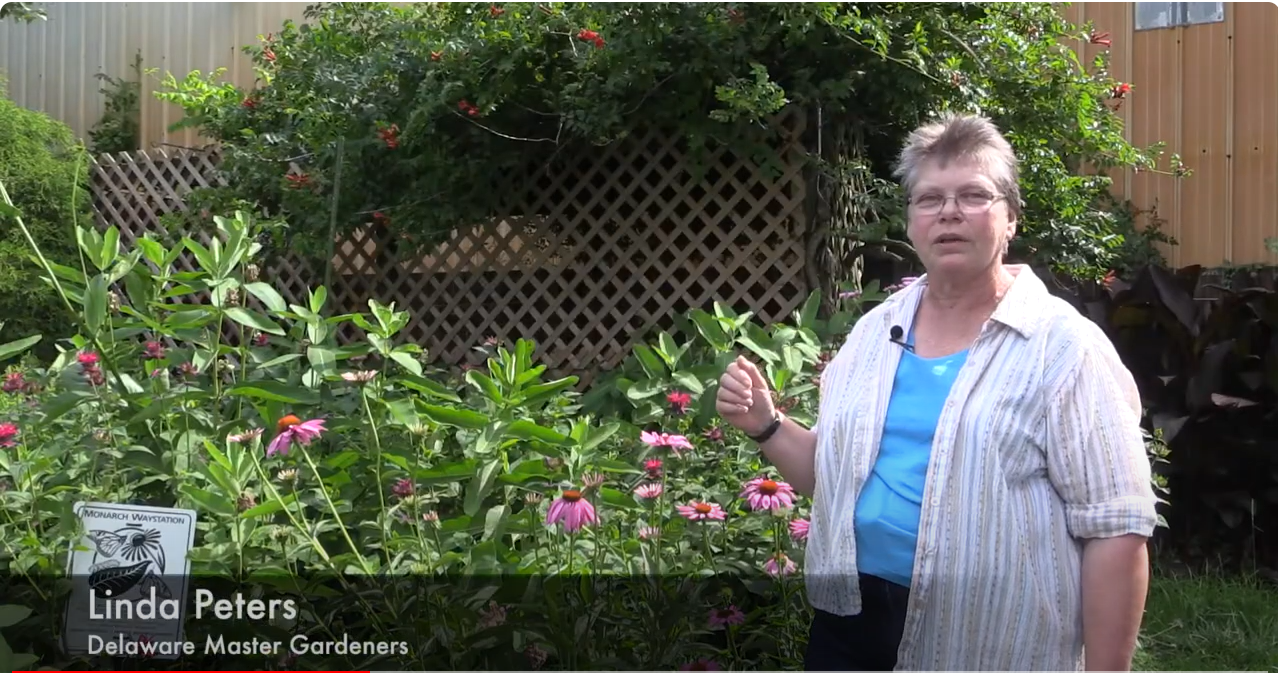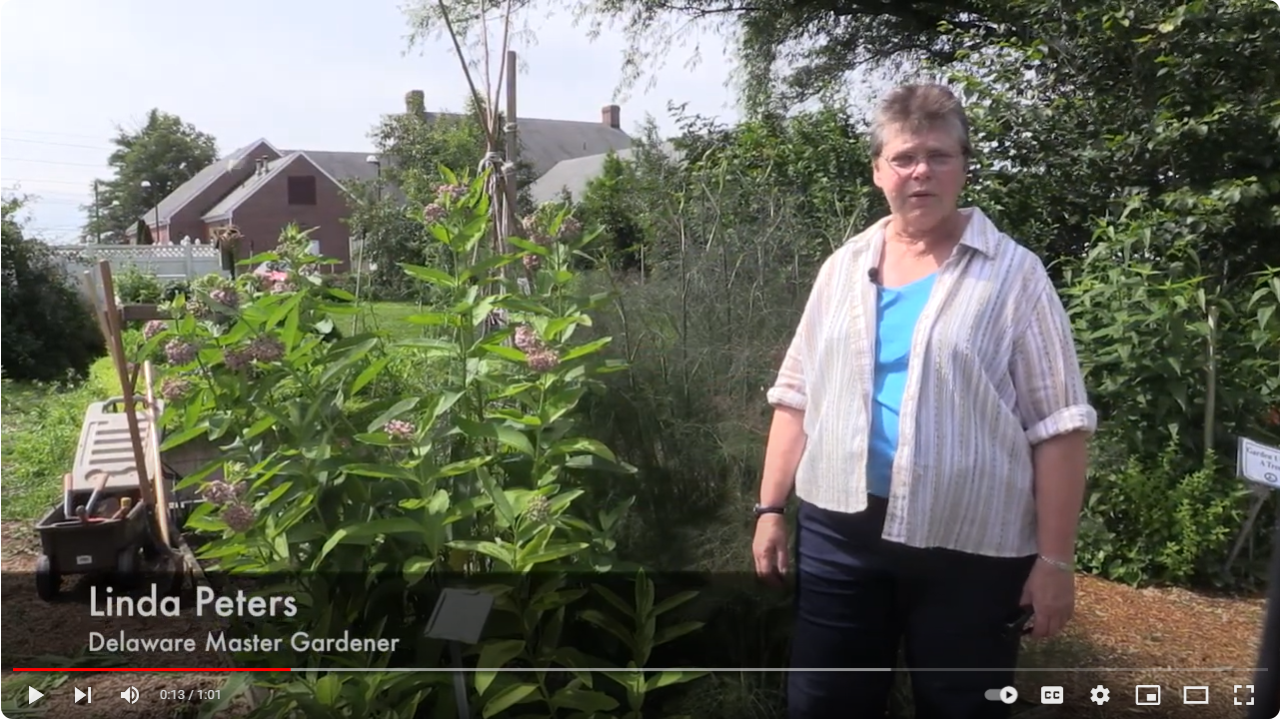
UD Apiary
UD Honey
is exclusively sold at the UDairy Creamery
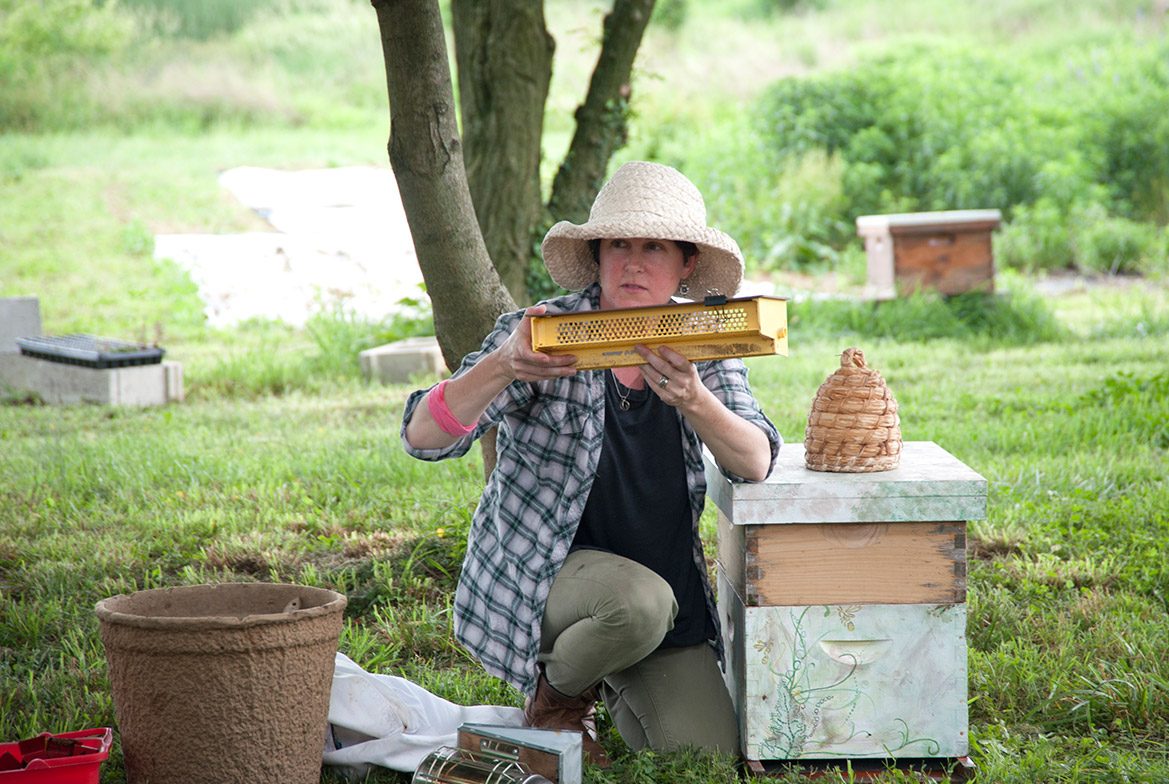
Home to 3.5 million honey bees, UD’s revitalized teaching apiary transforms hands-on research into delectable honey and real-world stewardship.
Discover how the Bee Team turns science, education, and community outreach into a healthier future for pollinators!
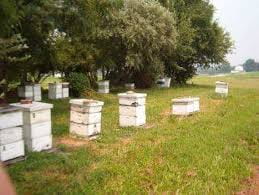
About the Apiary
In 2010 the University of Delaware’s apiary was rehabilitated and revitalized as a working, teaching apiary. We have now expanded into multiple apiary locations consistently housing between 60 and 150 colonies during the peak season.
A unique and special result of the increase in the number of colonies has been the production, harvest and marketing of UD’s own honey, featured in the UD Creamery and local retail shops throughout the year. This honey is not only delicious but is produced by University of Delaware bees! Our honey and other products of the hive, including beeswax candles, queen bees, and starter honey bee colonies, generate revenue that is used to help sustain the apiary.
The Teaching Apiary
The UD apiary on South Campus is home to approximately 60 hives translating to some 3.5 million honey bees, providing pollination services to the surrounding fields and gardens. The resident honey bees are an active part of the teaching, research, and outreach programs in the Department of Entomology and Wildlife Ecology and are used for honey, beeswax, and queen production.
Deborah Delaney, assistant professor of entomology and wildlife ecology, who oversees the apiary and bee program, teaches ENWC 224, the beekeeping class, where students steward their own hives and learn bee biology and beekeeping skills. Students are also encouraged to help with honey harvest and extraction.
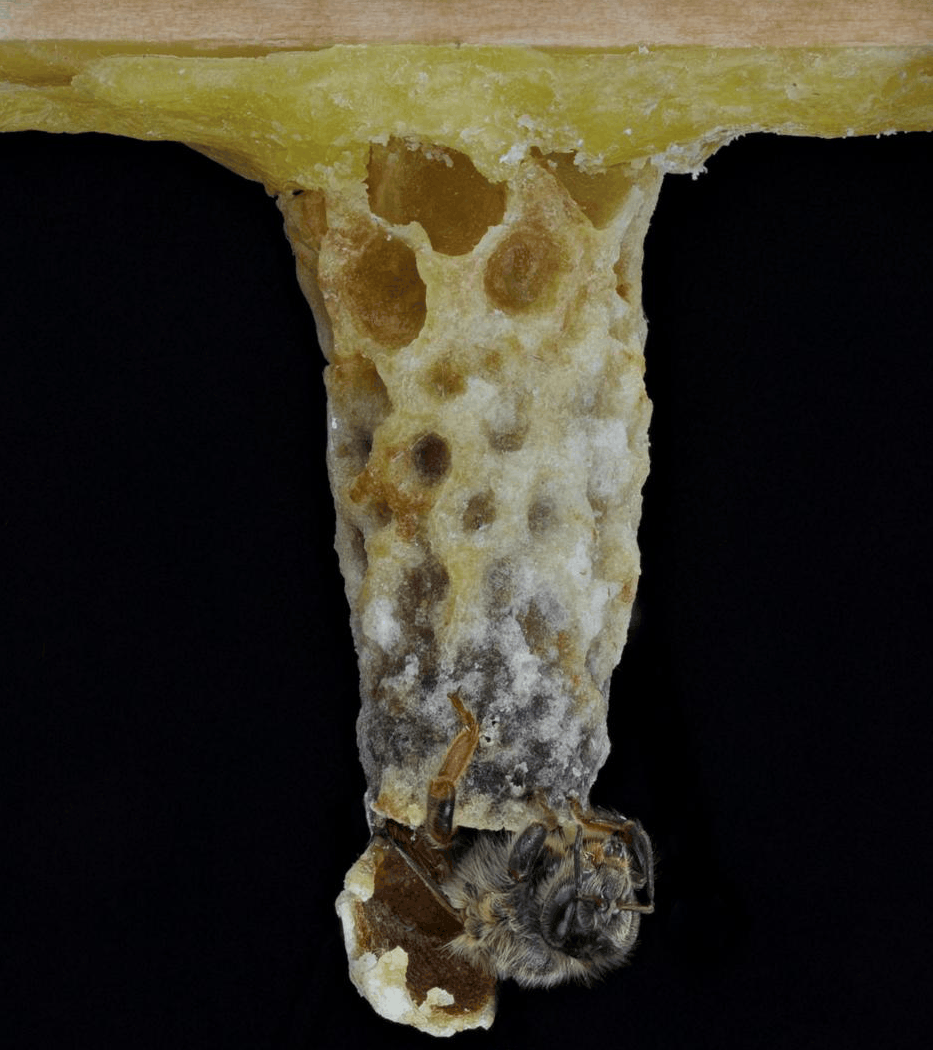
About UD's Apiculture Program
The Apiculture Program at the University of Delaware has many facets: research, teaching and extension, which are very interdependent. It is critical for an apiculture program to incorporate basic research results into applied management practices for industry groups and even citizen scientists. Due to the importance of honey bees in agriculture via the pollination service they provide and the marked decrease in honey bee populations over the past two decades, the science and art of beekeeping is a very sought after service.
We serve the public sector through educational workshops, seminars, hands-on demonstrations, web design, consultation and grant funded research aimed at increasing the economic viability of beekeepers and land managers in the Mid-Atlantic region.
The goals and strengths of the Apiculture Program are:
- to understand how to manage for pollinator population stability and to effectively communicate findings to the scientific, agricultural and public communities,
- to use molecular techniques to understand the mechanisms for population stability across the landscape and
- to use basic and applied research to mitigate a changing pollinator community that needs to meet human service requirements of pollination.
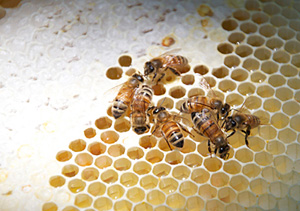
Making honey
The honey is made by the bees starting early in the spring as soon as the first trees start to bloom (most likely maples). Bees collect nectar and pollen from the various floral sources over the spring and summer months.
Honey changes from year to year, depending on the amount of rainfall during the season and what flowers are producing the nectar.
The bees on the Newark farm get a large amount of floral resources from black locust. There are also later flows that are a chaotic mix of things, but mainly clover, tulip poplar and a variety of other wild flowers. Late August up until early fall, they are bringing in goldenrod, aster and many non-native floral sources such as knotweeds. These nectars, and finally honey, tend to be much darker in color and have a rich flavor.
Once the forager bee brings the nectar back to the hive the nectar will have been mixed with special enzymes the foraging bee produces, but it is about 80 to 90 percent water at this time. Once the forager bee transfers the nectar to a house bee, the house bee spreads it in the bottom of a wax honeycomb cell and the process of evaporating the water out of the nectar begins. They will fan the nectar until the water content reaches about 19 percent, when they will cap the honey filled cells with a thin wax layer.
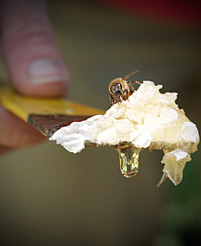
Honey capping
This capping lets the beekeepers know it is ready to harvest and is now truly honey. If honey was harvested before this capping occurred, the honey would ferment because the water content would be too high.
Once the honey is capped, Delaney and her crew of students go through each hive frame by frame, and gently brush off the bees and put the capped honey into a bee proof box for transportation to the extraction room.
They then start the process of removing those wax cappings which the bees spent so much energy creating. By removing the cappings the honey is free to flow from the wax cells.
Once the cappings are removed on both sides of the honeycomb, we put the frames of honey into a motorized 18-frame extractor. The extractor spins the frames very quickly, which causes the honey to be spun onto the walls of the extractor. The honey then drips down the walls into the bottom of the extractor barrel and spills out into a double sieve or filter that removes any wax pieces and bee parts. The sieve is placed over a food grade bucket and once full is poured into our bottling tank ready for bottling and labeling.
UD Bee Team
Meet the Team
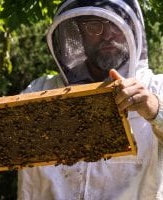
Dan Borkoski
Apiary Technician
Dan Borkoski has been the research apiary technician at University of Delaware since 2017. He previously served as an apiary inspector for the Pennsylvania Dept of Agriculture, and maintained a number of hives for his own small beekeeping business. Dan particularly enjoys converting students into bee-lovers (or maybe even beekeepers), and collaborating with local beekeepers and groups.
Contact: danbee@udel.edu
Graduate Students

Ziyad Abdul Qadir
Ph.D. candidate Entomology
Ziyad is an Entomology PhD student from Islamabad, Pakistan, and joined the Delaney lab in Spring 2021. His research focuses on the Integrated Pest Management of varroa mite.
Education
- M.Sc. (Hons.), Agricultural Entomology 2013: The University of Agriculture, Faisalabad, Punjab, Pakistan.
- B.Sc. (Hons.), Agricultural Entomology 2011: University of Sargodha, Sargodha, Punjab, Pakistan.

Jack Geraghty
MS candidate Entomology
Jack is a senior Wildlife Ecology and Conservation and Insect Ecology and Conservation double major in the College of Agriculture and Natural Resources. He has worked in the Delaney lab since spring of his freshman year helping with research and in the school’s apiary. His research has included looking at the effects of brood-mixing on colony genetics and disease and parasite resistance as well as examining the effects of parasite treatment on colony health and disease dynamics. He is currently working on his senior undergraduate thesis which involves using genetic extraction and evaluation techniques such as qPCR to quantify the pathogen load of deformed-wing virus in treatment hives with the goal of exploring the effects of varroa destructor mite treatments of colony mite and pathogen levels. In his free time Jack likes to hike, camp, and keep his own honey bees in his backyard in Maryland.
Undergraduate Students
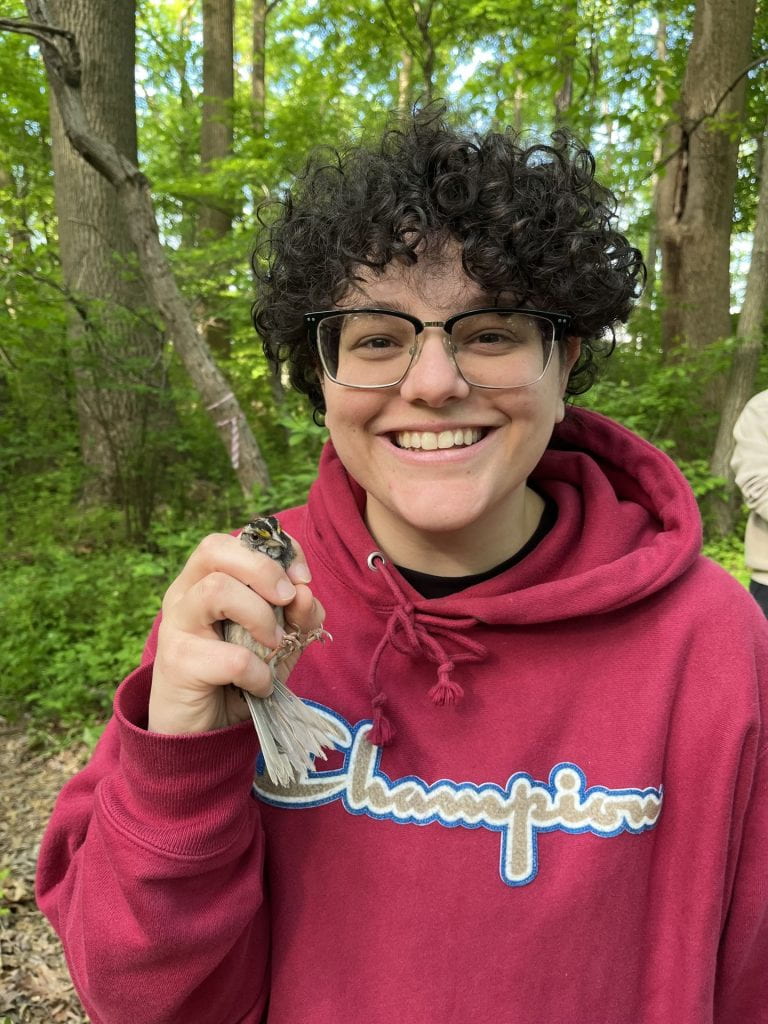
Emily Brooks
Emily is an undergraduate Wildlife Ecology and Conservation major at the University of Delaware and joined the bee team lab in the Spring of 2024. Their responsibilities include tending to the hives and hive yards, harvesting and bottling honey, processing wax for candle-making, and helping assist in maintaining the pollinator garden.
Information coming soon!

Adeliya Petlevanova
Adeliya is an undergraduate Insect Ecology and Conservation major at the University of Delaware. She joined the lab in the Spring of 2024 and her work includes taking care of the hives at the apiary, harvesting and bottling honey, candle-making, and other various tasks that need to be done.
Information coming soon!

Ryan van Hilst
Ryan is an undergraduate at the University of Delaware with dual majors in Plant Science and Insect Ecology & Conservation. He has worked in the Delaney Lab since Spring 2022 on research projects examining the effects of environmental factors on floral nutrition, pollinator source preference, and larval survivability on host plants. He has also participated in research on the effects of brood-mixing and parasite treatment on colony genetics, disease dynamics, and parasitic resistance. His work at the apiary includes groundskeeping, landscape architecture, horticultural design, and developing educational programming on plant-insect ecology and sustainable gardening.
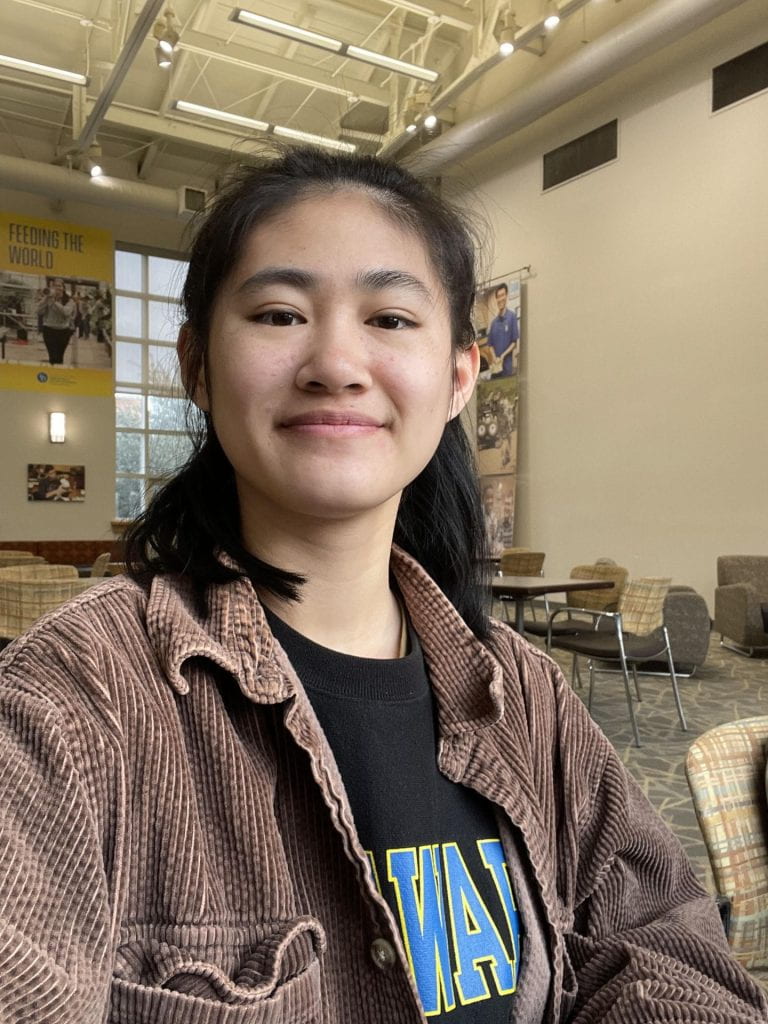
Ann Weaver
Ann Weaver is an undergrad Insect Ecology and Conservation major. She joined the UD Bee Lab in spring of 2023 and works on various tasks related to honeybees and pollen. Some of these tasks include assistant lab work, helping out with research hive assessments, working in the pollinator garden, and creating three dimensional pollen grain models to print with the lab’s 3-D printer.
Ask the UD Bee Team
Question
Hi UD Bee Team,
This is my first year, actually first month of beekeeping. I have one hive and installed my NUC on May 3. The NUC came with an Apivar strip, which is still in the hive, I’m not sure how old it is though. I just purchased 2 more strips and added a second deep box last week. My question is should I put the strips in the hive now or later?
Thanks in advance for your advice.
Answer
Thanks for reaching out. The apivar slowly releases a dose of Amitraz. The recommended time for in hive treatment is usually for six weeks. I am not sure who your supplier is or their mite management strategies, but they probably put the single strip in there to drop any mites so you could transfer your nuc into a colony mite free (or with as few mites as possible) as it grows.
I would not use anymore strips or mite treatment at this time. Your colony is most likely in full nectar and pollen collection mode. The only thing I would do at this time is to wear gloves and remove the old strip and then once a week check the colony for queen cells and whether they need more room (a second story or super).
I would not worry too much about mite levels until later in the season, I would say around August. I recommend doing a mite monitoring technique (48 hour mite drop on a sticky board, alcohol wash etc….) later in the season to know when mites levels are getting high. There are published thresholds (based on mites counts from different monitoring methods) that can help guide when you should treat the colony.
—Dr. D, UDBT
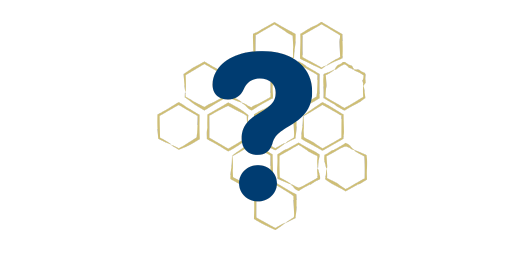
This is an ongoing column featuring questions from readers, and answers from UD’s Bee Team. All beekeeping questions are welcome! We may post your question (anonymously) here, and provide an answer for everyone out there that might be wondering the same thing.
If you have a beekeeping or bee-related question, please send it to UDBeeTeam@udel.edu with the subject line “Ask the Bee Team."
Resources for You

Honey Bee Removal
Help! I have bees in my house/tree/sidewalk!
UD does not routinely collect honey bee swarms or feral colonies. For help with bee removals, contact one of our local beekeeping clubs for a list of experienced beekeepers who can help you out:
Delaware Beekeepers Association
Chester County Beekeepers Association
When contacting a local beekeeper for help with a swarm, have as much information on hand as possible. Helpful information includes:
- location of the insects,
- how long have they been present,
- if any measures already been taken to remove them,
- photos of the location/entry point, and
- clear pictures of the insects for identification (dead or alive).
Note: A “swarm” is a cluster of bees hanging in a tree, fencepost, or something similar. Swarm removals are often simple and free of charge. Sometimes however, a honey bee colony establishes itself within a structure—building comb, storing honey, and producing brood. In these instances, the structure must usually be cut open to remove the bees along with all of their nest material to prevent reinfestation and any future damage to the structure. This is referred to as a “cut out” which should be performed by an experienced beekeeper, and usually includes a fee.
Pollinators
Build a home to protect our pollinators!
The public's interest in pollinator health and growing pollinator-friendly flowers, plants, shrubs and trees is an encouraging and most welcomed sign! Both novice and experienced gardeners and every level in between, are raising their hands to help our pollinator populations thrive. You are asking how to encourage and ensure an active pollinator garden. No matter the size of your garden, be it a container on a balcony or a modest section of your lawn, adding the right plant to attract the right pollinator is an important selection.

UD's Educational Pollinator Garden
Our apiary is the site of University of Delaware’s Educational Pollinator Garden, a 3,500 sq ft garden with examples of plants that support flower visitors throughout the year. It also features a bubbling fountain that serves as a water source for our bees, birds, and other visiting insects, and we have additional pollinator waystations scattered around the Teaching Apiary. The garden also serves as an outdoor teaching lab for several courses.
Watch
Explore these resources to learn more about planting for pollinators!

